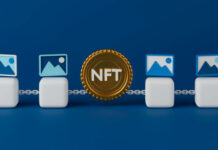One of our favorite tools at Penetration Pricing is the penetration model. In this model, we use a percentage of sales as a base for pricing. This makes it a great tool for pricing the difference between a price increase or decrease in sales.
What’s interesting here is that penetration pricing is considered to be one of the most accurate methods of pricing a product. Because it can measure the difference between the actual cost of a product and the average cost of the product in the market, it’s a great tool for pricing the best price from the market and also for pricing the best price in the market.
The other way around. This is the main drawback of the penetration pricing approach. Because it’s not just a simple one-way deal, it can actually cost thousands of dollars to buy a product.
The penetration pricing methodology that we use for our website allows us to do a few things that are nice to have. It gives us the ability to accurately compare the cost of the web site in the market to the cost of the actual product. And it allows us to also allow you to estimate the cost of some of the items on our site.
Our website isn’t a simple one-way deal. It is, however, a one-way deal with an initial cost, but a hidden cost. It is not a simple sale in that case. But it does allow us to have a much more accurate estimate for our pricing than we could have with a straight-up sale.
You might be able to find a decent price for your product with a search engine like Google, but how will you know when you’ve been on a product for a while? It might not be the cheapest price, but it could be a lot cheaper.
Its the reason that we use a penetration pricing approach with our website. In a penetration pricing model, your pricing is based partly on your perceived value, and partly on your perceived value of the product. By having a penetration pricing approach you can know how much your product is worth to you. And you can adjust your pricing, based on the perceived value, to be more in line with your perceived value.
In this case, the perceived value is the product’s total cost. So the more expensive the product, the more the perceived value will be. So if the product costs ten times the price of our website, we will be able to accurately calculate how much the product is worth to us. Of course, this assumes that we have accurate information about the product, and that we have accurate pricing information. If we don’t we would still be able to calculate the price accurately.
That’s a common problem when using penetration pricing (and other pricing tricks like the Cost Per Acquisition (CPA) or ROI). First and foremost, a pricing system is a mechanism for pricing. The problem is that it is not a mechanism to accurately price anything. We can’t accurately price anything because we don’t have accurate data about what it costs to get something to us. The data we have is either incomplete or inaccurate. So we have to use a different method of pricing.
Penetration pricing is the process of estimating the cost of doing something. The concept is that if you do a penetration test, you can use this time (and the money to buy the test) to estimate what the cost of the service is. You can use this time to estimate the cost of the service to you or to your customers.








